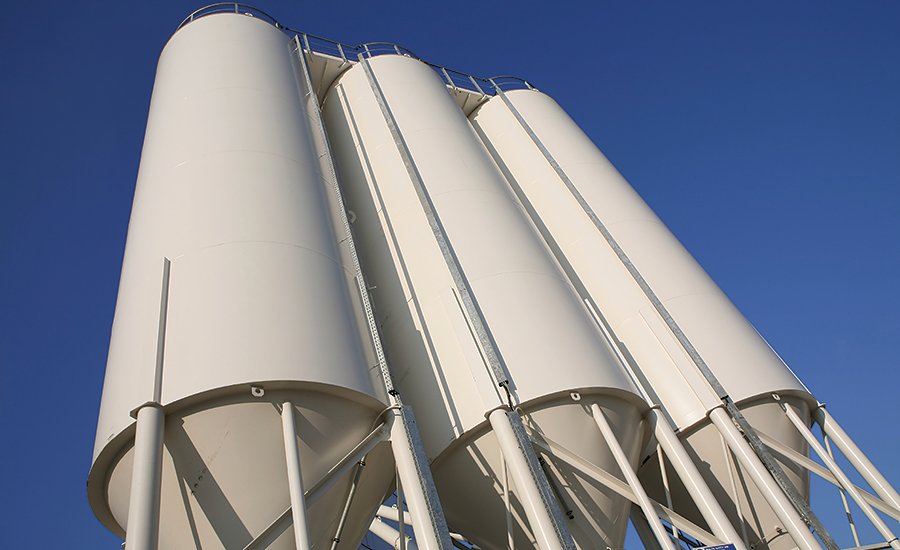The idea – and the complaint – that safety and health departments operate out of organizational “silos” has been around for decades. You can trace it back to the creation of OSHA in 1971. Safety and health became a compliance policing function in many companies. And many employers were angered at OSHA’s sudden intrusion into their operations. As a result, management put safety and health departments and personnel in a silo separated from mainstream business activity. For some employers angered at OSHA, the further distance between safety and the rest of the operations, the better. And so, in a number of business-case scenarios, began safety’s segregation – a cause of frustration, resentment and insecurity for many safety and health professionals that persists to this day.
Silos are everywhere
But the silo syndrome or mentality in corporations does not single out safety and health. Organizations of the twenty-first century continue to rely on time-tested forms of organizational structure built during the twentieth century, and perhaps the most common is the cultural cluster of silos. The idea is rooted in the towering grain silos that dominate the North American plains, protecting wheat and corn from rain and snow. It’s important that different grains remain separate, and hard to get at.
It makes a certain sense to organize an enterprise into operating silos. Departments or areas of expertise that are set up in silos promote independent thinking, entrepreneurship, ownership and accountability. Some organizational management experts believe that silos are necessary and occur naturally, if not by the owner’s or CEO’s design. It’s human nature – experts say: “Everyone wants to play in their own sandbox.”
It’s also natural that talented, competitive, and ambitious “Type A” managers want to climb to the top of their particular silo of influence to be in a position of command and control. Those at the top of an organizational silo possess power, protect their territory, and make decisions that cascade down the silo through “middle managers” and supervisory levels to the base of the silo, where rank-and-file employees often make no decisions, offer no input, and have no autonomy.
Short-sighted silo commanders
The power broker at the top of any particular organizational silo can be protective and possessive. Many “silo commanders” take pride in their expertise, their power, and an orderly and efficient silo operation that makes valuable contributions to the corporate entity.
Often these bosses are so preoccupied they can’t see beyond their own silo. They don’t see, and are not particularly interested in, the equally important contributors of the corporation’s other silo commanders. This disconnect can be ultimately disastrous for companies, leading to “the right hand not knowing what the left hand is doing,” a deteriorating reputation in the marketplace, and confused and frustrated customers turning to other vendors.
Meanwhile, in the lower reaches of the silo, employees often feel as though they are in the dark. They feel alienated, ignored, underappreciated, not recognized nor rewarded for their performance, and consequently, they are not motivated.
Silo confinement
An internal silo psychology and emotional intelligence develops within the hearts and minds of employees. It is formed from their experiences and feelings, and becomes a type of “muscle memory” or matter of habit. Employees don’t see the bigger corporate picture, plan, or vision, and don’t expect to. They become accustomed to their silo confinement – passive, robotic, and operating on autopilot, according to some organizational management experts.
Companies structured around clusters of silos can experience serious safety and health consequences. Disempowered, disengaged employees who are demoralized and unmotivated are accidents waiting to happen. Operating on muscle memory and running on autopilot, they lack situational awareness, mindfulness, and safety consciousness. They can take risks for granted. They overlook hazards. They neglect to wear personal protective equipment (PPE). They take shortcuts.
Shaking up silo psychology
One solution to this threatening safety climate is for the safety and health department to arrange for a recognition and rewards program. But traditional attempts to arouse safety awareness by offering money or gifts have often been flawed. Incentives have been retroactively rewarded after a period of injury-free work days has been achieved. Or, an outsized incentive, such as a paid vacation to Hawaii or a 14-foot motorboat displayed in the office lobby, is randomly awarded to just one employee if the entire workforce reaches a zero-injury milestone.
The result: employees hide injuries, do not report them, and exert peer pressure on coworkers to conceal injuries. Or, employees feel they have little chance to win the big prize, believe the “competition” is unfair, and go about their work without any change in their behaviors and attitudes.
OSHA’s stance on incentives
OSHA in recent years has taken note of these flawed incentive programs and agency officials have spoken out against programs that lead to under-reporting of injuries. At the same time, OSHA’s current chief, Dr. David Michaels, has voiced support for incentive programs that recognize and reward proactive safety performance measures, such as near-miss reporting, finding and fixing hazards, and bringing audit findings to closure.
The problem with multiple efforts to motivate
The silo syndrome can also lead to multiple incentive programs that are ultimately divisive. The manager of HR may decide to give every department employee the day off for their birthday. Employees in other “silos” or departments become jealous and complain. Salespeople may receive bonuses for breaking monthly quotas. Other employees have no chance at earning extra income. Manufacturing can offer incentives for surpassing productivity goals; quality can award incentives for reducing levels of defect rates; wellness programs might offer free gym memberships to the biggest weight losers; and customer service can incentivize the number of calls handled per hour—yet other departments in the same organization may not budget any dollars or time for recognition and rewards.
Incentive and motivation programs are but one example of how organizational silos can lead to duplication of effort, duplication of cost outlays, wasted intelligence and subject-matter expertise, and a business that is obviously not firing on all cylinders. Silos can stunt creativity, innovation, communication, and transparency. Obviously, corporations working with these handicaps are inefficient, less competitive, less profitable, and perhaps on the road to ruin.
Challenge silo thinking
The solution is not to bring in the wrecking ball to demolish the physical structures of corporate silos. Organizations are indeed built on various areas of expertise – R&D, IT, HR, sales, marketing, engineering, safety and health, etc. The solution is to focus on the internal silo mentality or syndrome created by experiences, muscle memory, and the habitual “ways of doing things around here.” You want to change the culture of silo thinking.
President Kennedy did this in the early 1960s when he proclaimed, “By the end of the decade, we will put a man on the moon and safely return him to earth.” NASA had no choice; its departments and divisions had to collaborate every day to achieve something that had never been done before. Kennedy’s leadership set the vision and the unified agenda, and forced a bureaucratic culture to change.
The opportunity for safety and health pros
Safety and health professionals have unique opportunities to break through silo thinking and take the lead in total workforce engagement. Here are some examples:
1 – Safety has performance measures everyone can relate to. Not only department, business-unit and corporate-wide injury and illness rates (which only tell you what has already happened), but proactive metrics such as behavioral observations, near-miss reports, and number of risks identified by all employees. These measures should be disseminated across the organization via platforms such as intranets, scoreboards, emails, eNewsletters, signage and social media.
2 – Safety cannot succeed, and a zero-incident culture cannot be achieved, without an engaged workforce. Success in other corporate silos also depends on workforce engagement. You need engaged employees to improve their own physical and mental fitness and lower healthcare costs; to improve customer service; to lower defect rates; to improve productivity; to shorten delivery times; and to more quickly execute and close maintenance work orders. Safety professionals can step out of their silos and meet and strategize with other “silo commanders” to develop a holistic, global total workforce engagement plan based on incentive recognition and rewards that are consistently and uniformly awarded for achievements within each silo.
Perhaps it takes a leader such as former Alcoa CEO Paul O’Neill, who firmly believed that safety-related problem-solving and teamwork could be models and pilot projects for deployment in every corner of the corporation. Sometimes shattering the silo mentality takes an emergency, a crisis, or a calamity – such as the tragedies of 9/11 forcing fragmented homeland security agencies to work together.
3 – Safety involves numerous activities that lend themselves to cross-functional participation. Safety audits, incident investigations, ergonomics, housekeeping, and the 5S methodology of work organization (sort, systematize, sweep, standardize and sustain) and finding and fixing hazards all benefit from diverse input and expertise coming from operations, engineering, maintenance, upper management, and line employees.
4 – Safety has natural tie-ins with other organizational activities and goals that cut across silos. Safety is a social issue with metrics that can be included in corporate sustainability indices. Safety’s emphasis on proactive prevention aligns with today’s increasing emphasis on employee health promotion and chronic disease prevention. Safety’s many training programs can be integrated into a corporate-wide learning management system. And initiatives to shrink an operation’s energy footprint and pollution output can benefit from safety’s contributions to conserving resources, managing hazardous exposures and wastes, fleet traffic management, and increasing employees’ awareness of lighting, noise, vibration, air flow, air temperatures, ergonomic work processes, and energy use.



